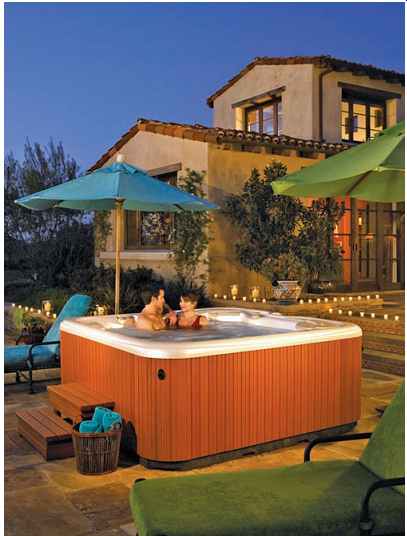AMAZON multi-meters discounts AMAZON oscilloscope discounts
OBJECTIVES
• recognize the importance of proper swimming pool wiring with regard to human safety.
• discuss the hazards of electrical shock associated with faulty wiring in, on, or near pools.
• understand and apply the basic NEC requirements for the wiring of swimming pools, spas, hot tubs, and hydromassage bathtubs.
People, water, and electricity do not mix! To protect people against the hazards of electric shock associated with swimming pools, spas, hot tubs, and hydromassage bathtubs, special Code requirements are necessary.
A picture is worth a thousand words. A detailed drawing of the NEC requirements for swimming pools appears on Sheet 10 of 10 in the Plans found in the back of this text. Refer to this drawing often as you study this section.
ELECTRICAL HAZARDS
A person can suffer an immobilizing or lethal shock in a residential-type pool in either of two ways.
1. Direct contact: An electrical shock can be deadly to someone in a pool who touches a "live" wire or touches an object such as a metal ladder, metal fence, metal parts of a luminaire, metal enclosures of electrical equipment, or appliances that have become "live" by an ungrounded conductor coming in contact with the metal enclosure or exposed metal parts of an appliance. FIG. 1 shows a person in the water touching a faulty appliance.
2. Indirect contact: An electrical shock can be lethal to someone in a pool if the person is merely in the water when voltage gradients in the water are present. This is illustrated in FIG. 2.
As shown in FIG. 2, "rings" of voltage radiate outward from the radio to the pool walls and bottom of the pool. These rings can be likened to the rings that form when a rock is thrown into the water. The voltage rings or gradients range from 120 volts at the radio to zero volts at the pool walls and bottom. The pool walls and bottom are assumed to be at ground or zero potential. The gradients, in varying degrees, are found throughout the body of water. FIG. 2 shows voltage gradients in the pool of 90 volts and 60 volts. This figure is a simplification of the actual situation in which there are many voltage gradients. In this case, the voltage differential, 30 volts, is an extremely hazardous value. The person in the pool immersed in these voltage gradients is subject to severe shock, immobilization (which can result in drowning), or actual electrocution. Tests conducted over the years have shown that a voltage gradient of 1½ volts per foot can cause paralysis.
===
A person touches a ‘live’ faulty appliance.
Current flows through the body to ground, resulting in lethal shock.
‘Live’ faulty appliance
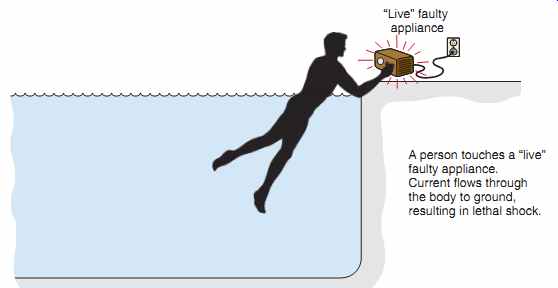
FIG. 1 Touching a "live" faulty appliance can cause lethal
shock.
===
The shock hazard to a person in a pool is quite different from that of the normal "touch" shock hazard to a person not submersed in water. The water makes contact with the entire skin surface of the body rather than just at one "touch" point.
Skin wounds, such as cuts and scratches, reduce the body's resistance to shock to a much lower value than that of the skin alone. Body openings such as ears, nose, and mouth further reduce the body resistance. As Ohm's law states, for a given voltage, the lower the resistance, the higher the current.
KEY NEC REQUIREMENTS--WIRING FOR SWIMMING POOLS
Article 680 covers swimming pools, wading pools, hydromassage bathtubs, fountains, therapeutic and decorative pools, hot tubs, and spas.
Here are some of the general Code rules.
Comprehensive details for swimming pool requirements are found on Sheet 10 of 10 of the Plans at the back of this text.
General, Part I. Contains general requirements that apply to all types of swimming pools, spas, hot tubs, hydromassage tubs, and similar water related equipment. Parts II, III, IV, V, VI, and VII discuss the wiring requirements for specific equipment.
Scope, 680.1: The scope tells us exactly what is covered by Article 680.
Definitions, 680.2: There are many one-of-a kind terms listed in 680.2. These terms might seem like a foreign language. It makes sense to read these definitions carefully to make it easier to understand the rest of Article 680.
Other Articles, 680.3: Many of the basic requirements of Section 1 through Section 4 in the NEC are modified by special rules in Article 680 that are unique to swimming pools, wading pools, hydromassage bathtubs, therapeutic pools, decorative pools, hot tubs, and spas. This section of the NEC contains a convenient table that lists other articles and sections that apply.
Ground-Fault Circuit Interrupters, 680.5: GFCIs shall be listed circuit breakers or receptacles, or other listed types. GFCIs are discussed in Section 6. Throughout Article 680, you will find the need for GFCIs.
Be careful when connecting underwater luminaires. Once you run conductors beyond (on the load side of) a GFCI device protecting that wiring, you are not permitted to have other conductors in the same race way, box, or enclosure. The exceptions to this rule are when (1) the other conductors are protected by GFCIs; (2) the other conductors are equipment grounding conductors; (3) the other conductors are supply conductors to a feed-through type GFCI; or (4) the GFCI is installed in a panelboard, where obviously there will be a "mix" of other circuit conductors that are not GFCI protected. This is covered in 680.23(F)(3).
Grounding, 680.6: In general, grounding shall be done as required in Article 250. But there are modifications that specifically address swimming pools.
===
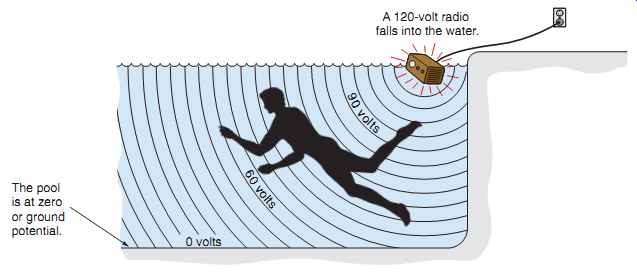
FIG. 2 Voltage gradients surrounding a person in the pool can cause severe
shock, drowning, or electrocution.
====
Cord-and-Plug-Connected Equipment, 680.7: Here we find permission to use a flexible cord-and-plug connection for fixed or stationary equipment associated with a permanently installed pool. Underwater luminaires are not included in this permission.
Overhead Conductors, 680.8: Overhead open conductors must be kept out of reach.
Clearances are shown in Plan 10 of 10 in the back of this text.
Electric Pool Water Heaters, 680.9: The branch-circuit conductor ampacity and the rating of the branch-circuit overcurrent devices must not be less than 125% of the total nameplate rated-load ampere rating of the electric heater. FIG. 3 shows the requirements for unit heaters, radiant heaters, and embedded heating cables.
Underground Wiring Location, 680.10: Underground wiring is not permitted under pools or within 5 ft (1.5 m) horizontally from the inside wall of the pool. There are a few exceptions.
Maintenance Disconnecting Means, 680.12: A means shall be provided to simultaneously disconnect all ungrounded conductors of a circuit supplying pool-associated equipment.
The disconnecting means shall be readily accessible, within sight, and located at least 5 ft (1.5 m) horizontally from the inside walls of the pool, spa, or hot tub. Pool lighting is not covered by 680.12.
GFCI Protection for Pump Motors, 680.22(B): All 15- and 20-ampere outlets supplied by branch circuits protected by an overcurrent device rated 120 volts through 240 volts, single phase, that supply pump motors whether by receptacle or direct connection shall be GFCI protected.
Permanently Installed Pools, Part II. Here we find the rules governing permanently installed pools such as for motors; clearances for overhead lighting; underwater lighting; existing installations; receptacles; requirements for switching; equipment associated with the pool; bonding, grounding, and audio equipment; and electric h eaters. Electric deck heater Code requirements are shown in FIG. 3.
Grounding and bonding together all metal parts in and around pools ensures that these metal parts are at the same voltage potential to ground, greatly reducing the shock hazard. Stray voltage and voltage gradient (see FIG. 2) problems are kept to a minimum. Proper grounding and bonding also facilitates the opening of the over current protection devices should a fault occur in the circuit(s).
You will see on Sheet 10 of 10 of the Plans that a metal conduit by itself is not considered an adequate equipment grounding means for equipment in and around pools.
====
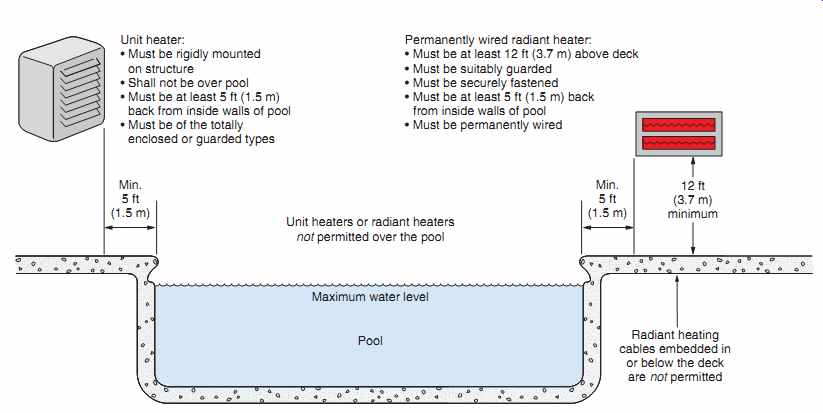
FIG. 3 Deck-area electric heating within 20 ft (6.0 m) from inside edge
of swimming pools, 680.27(C).
====
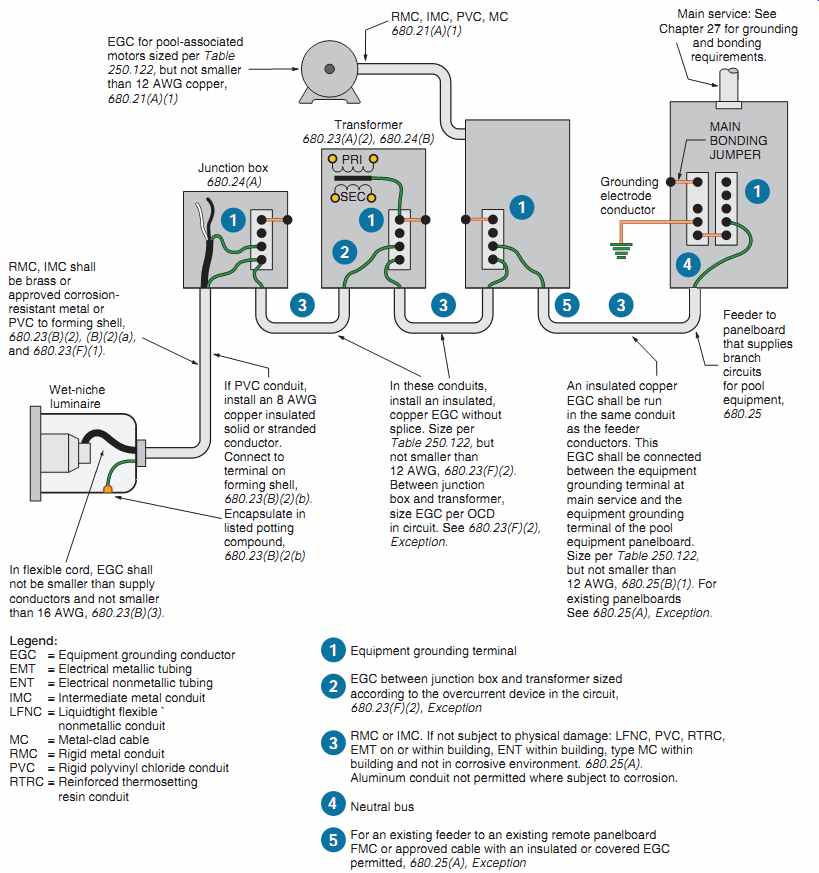
FIG. 4 A "trail" of the grounding and bonding requirements
from a wet-niche luminaire back to the main service panelboard.
PRI SEC
RMC, IMC shall be brass or approved corrosion- resistant metal or PVC to forming shell, 680.23(B)(2), (B)(2)(a), and 680.23(F)(1).
EGC for pool-associated motors sized per Table 250.122, but not smaller than 12 AWG copper, 680.21(A)(1) RMC, IMC, PVC, MC 680.21(A)(1) Main service: See Section 27 for grounding and bonding requirements.
An insulated copper EGC shall be run in the same conduit as the feeder conductors. This EGC shall be connected between the equipment grounding terminal at main service and the equipment grounding terminal of the pool equipment panelboard.
Size per Table 250.122, but not smaller than 12 AWG, 680.25(B)(1). For existing panelboards See 680.25(A), Exception.
In these conduits, install an insulated, copper EGC without splice. Size per Table 250.122, but not smaller than 12 AWG, 680.23(F)(2).
Between junction box and transformer, size EGC per OCD in circuit. See 680.23(F)(2), Exception.
If PVC conduit, install an 8 AWG copper insulated solid or stranded conductor.
Connect to terminal on forming shell, 680.23(B)(2)(b).
Encapsulate in listed potting compound, 680.23(B)(2(b) In flexible cord, EGC shall not be smaller than supply conductors and not smaller than 16 AWG, 680.23(B)(3).
Legend:
EGC = Equipment grounding conductor EMT = Electrical metallic tubing ENT = Electrical nonmetallic tubing IMC = Intermediate metal conduit LFNC = Liquidtight flexible ` nonmetallic conduit MC = Metal-clad cable RMC = Rigid metal conduit PVC = Rigid polyvinyl chloride conduit RTRC = Reinforced thermosetting
resin conduit
Equipment grounding terminal EGC between junction box and transformer sized according to the overcurrent device in the circuit, 680.23(F)(2), Exception RMC or IMC. If not subject to physical damage: LFNC, PVC, RTRC, EMT on or within building, ENT within building, type MC within building and not in corrosive environment. 680.25(A). Aluminum conduit not permitted where subject to corrosion.
Neutral bus
For an existing feeder to an existing remote panelboard FMC or approved cable with an insulated or covered EGC permitted, 680.25(A), Exception Wet-niche luminaire Junction box 680.24(A) Transformer 680.23(A)(2), 680.24(B) Feeder to panelboard that supplies branch circuits for pool equipment, 680.25 Grounding electrode conductor MAIN BONDING JUMPER
====
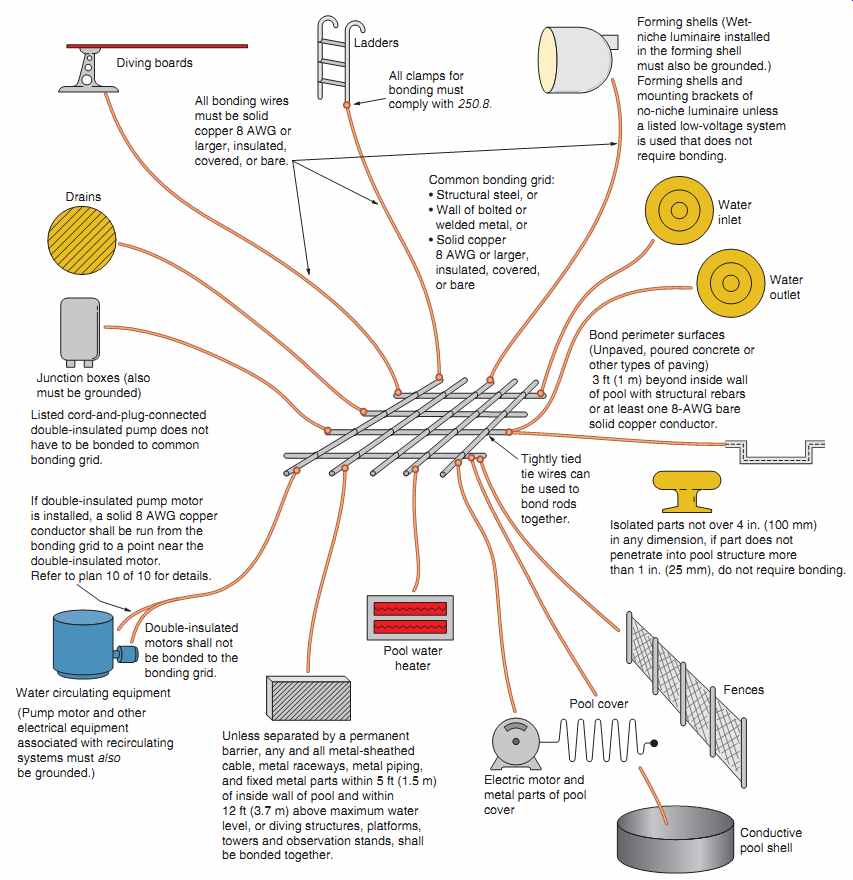
FIG. 5 Equipotential Bonding Grid: The purpose of bonding together all
metal parts and other conductive surfaces that are part of, in, and around
a permanently installed swimming pool is to reduce voltage gradients in the
pool and adjacent areas around the pool. Bonding is done with solid 8 AWG copper
conductors (insulated, covered, or bare) or with rigid metal conduit made of
brass or other identified corrosion-resistant metal. See the list of items
required to be included in the equipment bonding grid in NEC 680.26 and Plan
10 of 10. In installations where the structural steel is encapsulated with
nonconductive material, you will have to install a copper conductor grid.
See 680.26(B)(1)(a) and (b).
Diving boards Ladders Water inlet Water outlet All clamps for bonding must comply with 250.8. All bonding wires must be solid copper 8 AWG or larger, insulated, covered, or bare.
Fences
Pool cover
Water circulating equipment
Pool water heater
Drains
Conductive pool shell
Forming shells (Wet niche luminaire installed in the forming shell must also be grounded.) Forming shells and mounting brackets of no-niche luminaire unless a listed low-voltage system is used that does not require bonding.
Bond perimeter surfaces (Unpaved, poured concrete or other types of paving) 3 ft (1 m) beyond inside wall of pool with structural rebars or at least one 8-AWG bare solid copper conductor.
Tightly tied tie wires can be used to bond rods together.
Isolated parts not over 4 in. (100 mm) in any dimension, if part does not penetrate into pool structure more than 1 in. (25 mm), do not require bonding.
Electric motor and metal parts of pool cover
Unless separated by a permanent barrier, any and all metal-sheathed cable, metal raceways, metal piping, and fixed metal parts within 5 ft (1.5 m) of inside wall of pool and within 12 ft (3.7 m) above maximum water level, or diving structures, platforms, towers and observation stands, shall be bonded together.
(Pump motor and other electrical equipment associated with recirculating systems must also be grounded.) Double-insulated motors shall not be bonded to the bonding grid.
If double-insulated pump motor is installed, a solid 8 AWG copper conductor shall be run from the bonding grid to a point near the double-insulated motor.
Refer to plan 10 of 10 for details.
Listed cord-and-plug-connected double-insulated pump does not have to be bonded to common bonding grid.
Junction boxes (also must be grounded)
Common bonding grid:
-- Structural steel, or
-- Wall of bolted or welded metal, or
-- Solid copper
8 AWG or larger, insulated, covered, or bare
====
FIG. 4 is a detailed illustration showing the grounding of important metal parts of a permanently installed pool. As can be seen, the equipment grounding conductors also bond or connect the enclosures together, as stated in the Informational Note following the definition of Equipment Grounding Conductor in NEC Article 100.
FIG. 5 shows an equipotential bonding grid that consists of the conductive reinforcing steel bars of a permanently installed swimming pool.
The conductor that connects various components together must not be smaller than 8 AWG and must be a solid copper conductor. If the pool shell does not have conductive steel reinforcing bars, a copper bonding grid is required. See NEC 680.26(B) for details about the following. Components that must be bonded include these:
• Conductive pool shells
• Perimeter surfaces within 3 ft (1 m)
• Metallic components
• Underwater lighting
• Metal fittings
• Electrical equipment associated with the water circulating system
• Fixed metal parts within 5 ft (1.5 m). Note that the bonding conductor does not have to be connected to any service equipment or any grounding electrode. It merely ties all metal parts together.
Pool water contains dissolved chemicals that are conductive to some extent. Some pools are made of fiberglass (nonconductive) and some have insulating liners (nonconductive). Where there are no metal parts in contact with the pool water, there still is a need to bond the water to the pool deck to eliminate volt age gradients between the pool water and the deck.
For these situations, An intentional bond of a mini mum conductive surface area of 9 in. 2 (5806 mm2 ) shall be installed in contact with the pool water.
See 680.26(C).
Storable Pools, Part III. Storable pools are just that: they are used on or above the ground and can be dismantled and stored.
The wiring for storable pools must follow the basic requirements found in Article 680, Part 1, plus the additional requirements found in Part III. The additional requirements for storable pools are as follows:
• Cord-connected pool filter pumps are double insulated, and have provisions for grounding only internal and non-accessible noncurrent carrying metal parts. This is the equipment grounding conductor in the cord that has a grounding-type attachment plug cap.
• All electrical equipment used with storable pools shall be GFCI protected. For cord connected pool filter pumps, the GFCI device is required to be part of the attachment plug cap or located in the power supply cord not more than 12 in. (300 mm) from the attachment plug cap, 680.31.
• All 125-volt, 15- and 20-ampere receptacles within 20 ft (6.0 m) of inside walls of a storable pool must be GFCI protected, 680.32.
• Receptacles are not permitted less than 6 ft (1.83 m) from the inside walls of a storable pool, 680.22(A)(1).
• Receptacles rated 15 or 20 amperes, 125 through 250 volts, that supply pool pump motors shall be GFCI protected.
Spas and Hot Tubs, Part IV. What's the difference? In reality, there is no difference. Many years ago, hot tubs were constructed of wood such as redwood, teak, cypress, or oak. Along came acrylics, plastics, fiberglass, and other synthetic products. The name "spa" was created. Today, both names are used interchangeably depending on where you live. They have therapeutic jets that create whirling currents of hot water, a filtering system, and some have mood lighting, sound systems, and waterfalls. Spas and hot tubs are not designed or intended to have the water drained or discharged after each use. Here are the code rules for spas and hot tubs. (See FIG. 6.) Outdoor Installations, 680.42: Shall be wired according to Parts I and II of Article 680, except for the following:
a. Flexible connections using flexible conduit and cord-and-plug connections are permitted.
b. Different metal components where there is metal-to-metal mounting of the same metal frame are acceptable as the required bond.
c. For one-family dwellings, the interior wiring to a self-contained spa or hot tub or a packaged spa or hot tub assembly is permitted to be conventional wiring methods that contain a copper equipment grounding conductor not smaller than 12 AWG. Conventional wiring methods are found in Section 3 of the NEC. However, outdoor wiring to the spa or hot tub must be those wiring methods required in Parts I and II of Article 680 for an in-ground swimming pool.
Nonmetallic-sheathed cable with 14 AWG conductors has a 14 AWG equipment grounding conductor. Nonmetallic-sheathed cable with 12 AWG conductors has a 12 AWG equipment grounding conductor.
Indoor Installations, 680.43: Shall be wired according to Parts I and II of Article 680, except for the following:
a. Receptacles:
• At least one 125-volt, 15- or 20-ampere receptacle connected to a general-purpose branch circuit must be installed at least 6 ft (1.83 m) but not more than 10 ft (3.0 m)
from the inside wall of the spa or hot tub.
• All other 125-volt, 15- or 20-ampere receptacles must be located at least 6 ft (1.83 m), measured horizontally, from the inside wall of the spa or hot tub.
• All 125-volt receptacles rated 30 amperes or less located within 10 ft (3.0 m) of the inside walls of a spa or hot tub must be GFCI protected.
• A receptacle that supplies power to a spa or hot tub must be GFCI protected.
b. Luminaires, lighting outlets, and ceiling suspended paddle fans above spa or hot tub and within 5 ft (1.5 m) from the inside walls of the spa or hot tub:
• to be not less than 12 ft (3.7 m) above if not GFCI protected.
• to be not less than 7 ft 6 in. (2.3 m) if GFCI protected.
• if less than 7 ft 6 in. (2.3 m), must be GFCI protected and be suitable for damp locations and be:
- recessed luminaires with a glass or plastic lens and nonmetallic or isolated metal trim.
- surface-mounted luminaires with a glass or plastic globe, a nonmetallic body, or a metallic body isolated from contact.
• if underwater lighting is installed, the rules for regular swimming pools apply, in which case refer to Sheet 10 of 10 of the Plans.
c. Switches:
• wall switches must be kept at least 5 ft (1.5 m), measured horizontally, from the inside edge of the spa or hot tub.
d. Bonding: Bonding requirements are similar to those of conventional swimming pools.
Bonding keeps everything at the same potential. Excluded are small conductive surfaces not likely to become energized such as drains and air and water jets. Bond together:
• all metal fittings within or attached to the spa or hot tub structure.
• metal parts of associated electrical equipment including pump motors.
• metal raceways, metal piping, and other metal surfaces within 5 ft (1.5 m) of the inside walls of the spa or hot tub, unless separated by a permanent barrier, such as a wall or building.
• electrical devices and controls not associated with the pool or hot tub and located not less than 5 ft (1.5 m) from the spa or hot tub. Bonding to the spa or hot tub system also is acceptable.
e. Bonding all of the above things together can be accomplished by means of threaded piping and fittings, by metal-to-metal mounting on a common base or frame, or by a solid copper 8 AWG or larger solid, insulated, covered or bare bonding jumper.
f. Bond all electrical equipment within 5 ft (1.5 m) of the inside wall of a spa or hot tub.
Also bond all electrical equipment associated with the circulating system of the spa or hot tub.
Protection, 680.44: The word protection refers to GFCI protection. Outlets for spas and hot tubs shall be GFCI protected, unless the unit has integral GFCI protection. A few other exceptions are mentioned in 680.44.
Fountains, Part V. The residence discussed in this text does not have a fountain. Permanently installed fountains come under the requirements of Part V of Article 680. For fountains that share water with a regular swimming pool, the wiring must con form to the requirements found in Part II of Article 680, which covers permanently installed swimming pools.
Small self-contained portable fountains that have no dimension over 5 ft (1.5 m) do not come under the requirements of Part V.
Pools and Tubs for Therapeutic Use, Part VI. The residence discussed in this text does not have any therapeutic equipment.
Hydromassage Bathtubs, Part VII. A hydromassage tub is intended to be filled, used, then drained after each use. These are also known as whirlpool bathtubs. Figure 22-12 illustrates one manufacturer's hydromassage bathtub.
• Protection, 680.71: The word protection refers to GFCI protection. Hydromassage bathtubs, together with their associated electrical components, must be GFCI protected, and must be supplied by an individual branch circuit.
• Protection, 680.71: All 125-volt, single-phase receptacles that are located within 6 ft (1.83 m), measured horizontally, from the inside walls of the hydromassage bathtub must be GFCI protected.
• Other Electrical Equipment, 680.72: A hydro massage bathtub does not constitute any more of a shock hazard than a regular bathtub.
All wiring (fixtures, switches, receptacles, and other equipment) in the same room but not directly associated with the hydromassage bath tub is installed according to all the normal Code requirements covering installation of that equipment in bathrooms.
• Accessibility, 680.73: Electrical equipment associated with a hydromassage bathtub must be accessible without damaging the building structure or finish.
If the hydromassage bathtub is cord and-plug-connected with the supply receptacle accessible only through a service access opening, the receptacle is required to be installed so that its face is within direct view and not more than 1 ft (300 mm) of the opening.
• Bonding, 680.74: All metal piping systems and all grounded metal parts in contact with the circulating water shall be bonded together using a copper 8 AWG or larger solid, insulated, covered, or bare.
The 8 AWG or larger solid copper bonding jumper is required to be long enough to terminate on a replacement non-double-insulated pump motor and shall be terminated to the equipment grounding conductor of the branch circuit of the motor when a double-insulated circulating pump motor is used.
This residence has a hydromassage tub in the master bathroom. The wiring of it is covered in Section 22.
GETTING TRAPPED UNDER WATER
There is another real hazard, not truly electrical in nature, but solvable electrically.
Drownings have occurred when a person is trapped under water by the tremendous suction at an unprotected drain. The grate over the drain may have been removed or is broken. One report indicated that three adult males could not pull a basketball from a drain because of the suction! To address this hazard, 680.41 requires that a clearly labeled emergency shutoff switch for the control of the recirculation system and jet system for spas and hot tubs shall be installed not less than 5 ft (1.5 m) away, adjacent to, and within sight of the spa or hot tub. Although this requirement does not apply to single-family dwellings, some states require this disconnect for single-family dwelling pools.
Another hazard associated with spas and hot tubs is prolonged immersion in hot water. If the water is too hot and/or the immersion too long, lethargy (drowsiness, hyperthermia) can set in. This can increase the risk of drowning. UL Standard 1563 establishes the maximum water temperature at 104°F (40°C). The suggested maximum time of immersion is generally 15 minutes. Instructions furnished with spas and hot tubs specify the maximum temperature and time permitted for using the spa or hot tub. Hot water, in combination with drugs and alcohol, presents a real hazard to life. Caution must be observed at all times.
Although not an electrical issue, it is interesting to note that Underwriters' Laboratories has a category referred to as Suction Fittings for Swimming Pools, Wading Pools, Spas, and Hot Tubs. For listing these fittings, UL uses the American Society of Mechanical Engineers Standard ASME A112.19.8-2007 that addresses the safety issues regarding hair, body, finger, and limb entrapment in suction fittings that are designed to be totally submerged in swimming pools, wading pools, spas, and hot tubs.
UNDERWRITERS LABORATORIES STANDARDS
UL standards of interest are these:
UL 676 Underwater Lighting Fixtures UL 943 Ground-Fault Circuit Interrupters UL 1081 Swimming Pool Pumps, Filters, and Chlorinators UL 1241 Junction Boxes for Underwater Pool Luminaires UL 1563 Electric Spas, Equipment Assemblies, and Associated Equipment UL 1795 Hydromassage Bathtubs
REVIEW
Note: Refer to the Code or the plans where necessary.
1. Most of the requirements for the wiring of swimming pools are covered in NEC Article.
2. Name the two ways in which a person may sustain an electrical shock when in a pool.
a.
b.
3. Using the text, the Plans in the back of this text, and the NEC, determine whether the following items must be grounded. Place an "X" in the correct space.
True or False
a. Wet-and-dry-niche luminaires
b. Electrical equipment located within 5 ft (1.52 m) of inside walls of pool
c. Electrical equipment located within 10 ft (3.0 m) of inside walls of pool
d. Recirculating equipment and pumps
e. Luminaires and ceiling fans installed more than 15 ft (4.5 m) from inside walls of pool
f. Junction boxes, transformers, and GFCI enclosures that contain conductors that supply wet-niche luminaires
g. Panelboards that supply the electrical equipment for the pool
h. Panelboards 20 ft (6.0 m) from the pool that do not supply the electrical equipment for the pool
4. Is it permitted to run other conductors in the same conduit as the GFCI-protected conductors that run to underwater luminaires?
5. NEC prohibits running electrical conduits under a swimming pool.
6. What is the purpose of grounding and bonding?
7. Does the NEC require that, after all of the metal parts of a swimming pool are bonded together to form a common grounding grid, all of this grid must be connected to a grounding electrode?
8. May conductors be run above the pool? Explain.
9. What is the closest distance from the inside wall of a pool that a receptacle may be installed?
10. Receptacles located within 20 ft (6.0 m) from the inside wall of a pool must be protected.
11. Luminaires installed above a new outdoor swimming pool must be mounted not less than (10 ft. [3.0 m]) (12 ft. [3.7 m]) above the maximum water level. Circle the correct answer.
12. Junction boxes and enclosures for transformers and GFCIs have one thing in common. They all (are made of brass) (have threaded hubs) (must be mounted at least 8 in. [200 mm] above the deck). Circle the correct answer.
13. For indoor spas and hot tubs, the following statements are either true or false. Check one. Refer to 680.43(A), (B), and (C).
True/False
a. Receptacles may be installed within 5 ft (1.5 m) from the edge of the spa or hot tub.
b. All receptacles within 10 ft (3.0 m) of the spa or hot tub must be GFCI protected.
c. Any receptacles that supply power to pool equipment must be GFCI protected.
d. Wall switches must be located at least 5 ft (1.5 m) from the pool.
e. In general, luminaires above a spa shall not be less than 7 ft 6 in. (2.3 m) above the maximum water level if the circuit is GFCI protected.
14. Bonding and grounding of electrical equipment in and around spas and hot tubs (is required by the NEC) (is decided by the electrician). Circle the correct answer.
15. Where a spa or hot tub is installed in an existing bathroom or other suitable location, an existing receptacle outlet within 5 ft (1.5 m) of the tub is permitted to remain, but only if the circuit feeding the receptacle has protection.
16. Underwater pool luminaires shall be installed so that the top of the lens is not less than in. below the normal water line, unless they are listed for a lesser depth.
17. a. Hydromassage bathtubs and their associated electrical components (shall) (shall not) be protected by a GFCI. Circle the correct answer.
b. All receptacles located within 6 ft (1.83 m) of a hydromassage tub (shall) (shall not) be protected by a GFCI. Circle the correct answer.
Prev. | Next
Similar Articles
